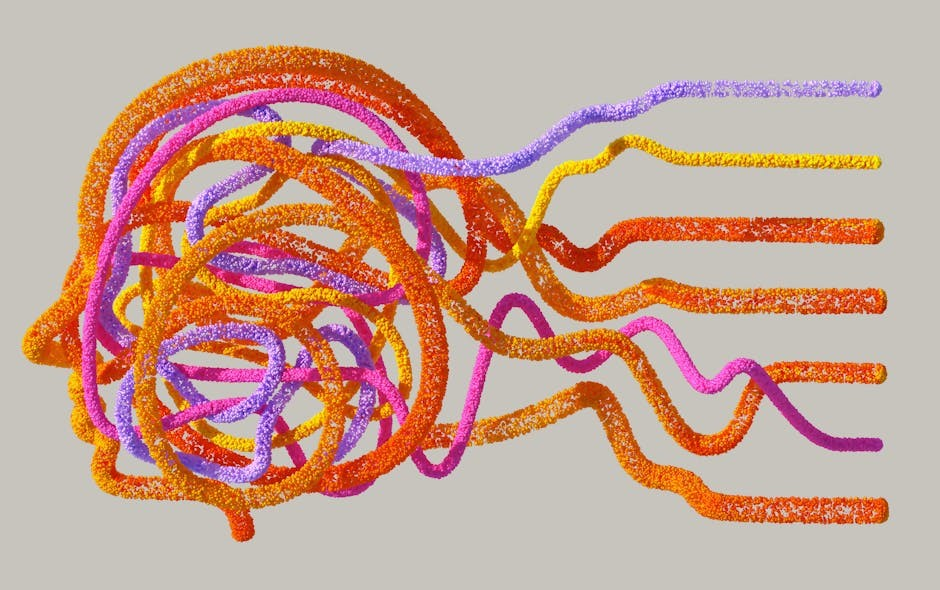
3d puzzle instructions
Discover the world of 3D puzzles with step-by-step guides and video tutorials. Perfect for enthusiasts, these resources offer tips for a fun, stress-relieving experience. Our instructions ensure a rewarding completion.
Understanding the Basics of 3D Puzzles
3D puzzles are intricate structures requiring patience and skill to assemble. They combine interlocking pieces to form complex designs, such as crystal shapes or miniature buildings. Understanding the basics involves recognizing how pieces fit together and following detailed guides. Video tutorials and step-by-step instructions are essential for mastering these puzzles, especially for beginners. Platforms like YouTube offer visual guidance, making assembly more manageable. Tips include organizing pieces by shape and color, using the right tools, and working in a clean, well-lit space. With practice, you’ll gain the confidence to tackle even the most challenging designs. Remember, patience and organization are key to enjoying the process and achieving a flawless finish.
Importance of Following Step-by-Step Guides
Following step-by-step guides is crucial for successfully assembling 3D puzzles. These instructions provide a clear roadmap, ensuring each piece is placed correctly. Skipping steps or deviating from the guide can lead to confusion and incorrect assembly. Detailed diagrams and visuals in the guides help users understand how components fit together. For complex puzzles, written instructions complement video tutorials, offering a comprehensive approach. Adhering to the sequence minimizes errors and enhances the overall experience. By following the guide, you can enjoy a stress-free assembly process and take pride in your completed puzzle. Remember, patience and adherence to instructions are key to achieving a perfect result.

Types of 3D Puzzles
Explore various 3D puzzles, including crystal, wooden models, and DIY kits, each offering unique challenges and creative assembly experiences for all skill levels.
Crystal Puzzles: Assembly and Tips
Crystal puzzles are a popular choice for their stunning visual appeal and challenging assembly. Made from polished polycarbonate, these puzzles require patience and precision. Start by sorting the pieces based on shape and color to streamline the process. Use the included diagrams or video tutorials for guidance, as visual aids can significantly simplify assembly. Align edges carefully to ensure a seamless fit, and avoid applying excessive force to prevent damage. For beginners, consider assembling a smaller puzzle first to build confidence. Tips include working on a flat surface and using a magnifying glass for intricate details. With persistence, the final result is a dazzling, crystal-clear masterpiece that reflects light beautifully. Display your finished puzzle proudly, as it makes a striking decorative piece. The satisfaction of completing a crystal puzzle is deeply rewarding, making it a favorite among enthusiasts.
Wooden 3D Puzzle Models: Construction Guide
Wooden 3D puzzle models offer a unique and rewarding challenge, combining traditional craftsmanship with modern design. These puzzles are typically made from high-quality wood and feature intricate laser-cut pieces. To begin, carefully sort the pieces by shape and size, referencing the included instructions or diagrams. Use a flat, stable workspace and consider organizing pieces into categories, such as edges, corners, and internal components. Apply a small amount of wood glue to secure joints, and gently clamp pieces together if needed. Sanding rough edges can improve fit and appearance. For complex designs, follow the step-by-step guide to ensure proper alignment. Avoid forcing pieces, as this may damage the wood. Once assembled, consider sealing the puzzle with a wood finish to protect and enhance its natural beauty. Patience and attention to detail are key to creating a sturdy and visually appealing wooden 3D puzzle model.
DIY 3D Puzzle Kits: A Creative Approach
DIY 3D puzzle kits offer a unique and creative way to build intricate models, allowing you to bring your ideas to life. These kits often include pre-cut pieces, glue, and detailed instructions, making them accessible to both beginners and experienced crafters. Unlike traditional puzzles, DIY kits let you customize the design by painting or modifying pieces before assembly. This hands-on approach fosters creativity and provides a sense of accomplishment as you watch your project take shape. Start by organizing the pieces and referencing the step-by-step guide. Use a clean, flat workspace and consider using clamps or adhesives for stability. With patience and attention to detail, you can create a one-of-a-kind 3D puzzle that reflects your personal style.
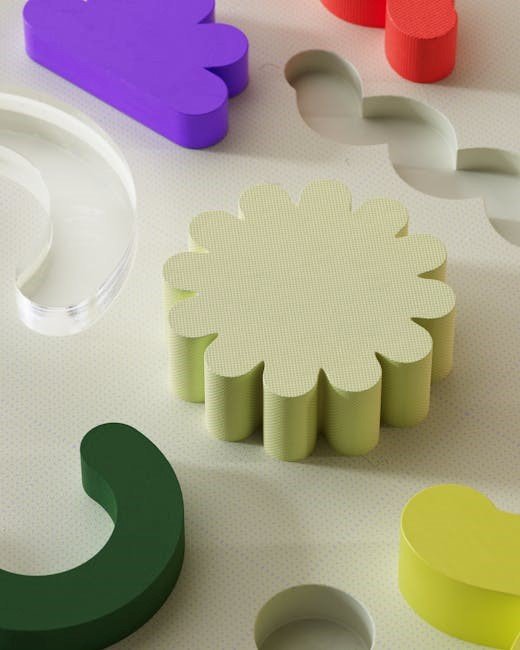
Necessary Tools and Materials
Pliers, screwdrivers, glue sticks, and sandpaper are essential for 3D puzzle assembly. A clamp, ruler, tweezers, cutting mat, pencil, and craft knife are also highly recommended.
Essential Tools for 3D Puzzle Assembly
For 3D puzzle assembly, essential tools include pliers for gripping small pieces, screwdrivers for securing parts, glue sticks for extra stability, and sandpaper for smoothing rough edges. A clamp helps hold pieces in place while gluing, while a ruler ensures accurate alignment; Tweezers are handy for reaching tiny components, and a cutting mat protects your workspace from damage. A pencil and craft knife can be useful for marking or trimming pieces. Having these tools ready ensures a smooth assembly process and minimizes frustration. Always keep them within reach to maintain efficiency and precision while building your 3D puzzle.
Materials Required for Different Puzzle Types
Different 3D puzzle types require specific materials to ensure successful assembly. Crystal puzzles often use high-quality acrylic or glass pieces, while wooden puzzles rely on laser-cut wood. DIY kits may include plywood, MDF, or cardboard, depending on the design. Metal puzzles use precision-cut aluminum or steel for durability. Plastic puzzles are made from durable, lightweight polymers. Adhesives like glue or epoxy are essential for securing parts permanently. Some puzzles may also require sandpaper for smoothing edges or paint for customization. Always refer to the puzzle instructions to confirm the materials needed, as they can vary based on complexity and design. Proper materials ensure a sturdy and visually appealing final product.

Preparation Before Assembly
Preparation is key before starting 3D puzzle assembly. Clean your workspace from dust and debris. Gather all tools and materials. Sort puzzle pieces by shape or color. Place the puzzle on a flat, stable surface. Ensure good lighting to see details clearly. Have the instruction manual or reference images nearby. Double-check that all pieces are included. This setup ensures a smooth and enjoyable assembly process.
Organizing Puzzle Pieces Effectively
I remember seeing some people use trays or containers to separate pieces. Maybe I can use small boxes or even paper plates to keep different types of pieces apart. But what if some pieces look almost the same? How can I tell them apart then? Maybe I need to look for small details or specific markings on each piece.
Another idea is to lay out the pieces in a way that I can see them all clearly. If I spread them out too much, I might lose track, but if they’re too bunched up, it’s hard to see individual pieces. Maybe using a large, flat surface like a table or a board would help. I could arrange them in rows or columns, grouping similar ones together.
I also think about the instruction manual. It might have pictures or diagrams that show how the pieces should fit together. If I can match the pieces to the diagrams, that might help me organize them better. Maybe I can place the pieces according to the sections they belong to in the instructions.
What about the edges and corners? Those are usually distinct and might be easier to identify. If I set those aside first, I can start building the frame or base of the puzzle, and then fill in the rest. That seems like a good strategy because it gives me a structure to work with.
I also wonder if there’s a specific order to follow when organizing the pieces. Should I start with the largest pieces first or the smallest? Maybe starting with the ones that have unique features would be better because they’re easier to recognize. Once those are in place, I can fill in the more common pieces.
Another thought is about the space where I’m working. If my workspace is cluttered, it might be harder to keep the pieces organized. Maybe I should clear off some space and dedicate it just to the puzzle. Using dividers or small compartments could help keep everything tidy and prevent pieces from getting mixed up.
I also think about time management. If I spend too much time organizing, it might take away from the actual assembly time. But if I don’t organize well, I might waste more time searching for pieces later. So, finding a balance is probably important. Maybe a quick sort based on obvious features and then adjusting as I go along.
What if I run into a piece that doesn’t seem to fit anywhere? Maybe I should have a ‘miscellaneous’ section for pieces I’m unsure about. I can go back to them after I’ve made some progress. It’s better to keep moving and come back to tricky pieces later.
I also recall seeing some people use digital tools or apps to help with puzzle organization. Maybe taking pictures of the pieces or using software to track them could be useful. Although, for a physical puzzle, that might be more complicated than necessary.
Another consideration is the material of the pieces. If they’re made of something delicate, I need to handle them carefully to avoid damage. Maybe using soft cloth or padding in the containers could prevent scratching or breaking.
I also think about teamwork. If I’m working with someone else, we could divide the organizing tasks. One person could sort by shape, and the other by color, making the process faster and more efficient.
What about if the puzzle has interchangeable pieces? Then organizing becomes even more critical to ensure that each piece ends up where it’s supposed to be. Maybe labeling the containers or using color-coded stickers could help differentiate between similar-looking pieces.
I also wonder about the size of the puzzle. For smaller puzzles, organizing might be simpler, but for larger, more complex ones, a detailed system is probably necessary. Maybe creating a checklist or inventory of the pieces could help ensure that nothing is missing or misplaced.
Another idea is to use the puzzle’s instructions to guide the organization. If the manual suggests a specific order or grouping of pieces, following that could streamline the process. It might also help to understand how the pieces fit together as I go along.
I also think about the psychological aspect. Staying organized can reduce frustration and make the puzzle more enjoyable. If I feel overwhelmed by the number of pieces, breaking them down into smaller, manageable groups can make the task less daunting.
What about after I’ve organized the pieces? How do I maintain that organization during assembly? Maybe keeping the sorted groups nearby and replenishing as I use them could help maintain order. Using small containers or bags that I can easily access might be useful.
I also consider the possibility of making mistakes during organization. If I accidentally put a piece in the wrong group, it could cause problems later. So, double-checking each piece as I sort them might be necessary, even if it takes a bit more time.
Another thought is about the learning process. As I work on organizing and assembling the puzzle, I might develop a system that works well for me, which I can apply to future puzzles. It might take some trial and error to find the best method.
I also think about the tools available. Maybe using a sorting mat with labeled sections or a puzzle organizer tool could enhance the process. These tools are designed specifically for puzzles and might offer features that make organization more efficient.
What about the time of day? Maybe organizing pieces in the morning when I’m more alert could help me stay focused and ensure accuracy. Doing it when I’m tired might lead to mistakes.
I also consider the environment. Good lighting is essential for seeing the details on the pieces. If the room is too dim, I might misjudge the shapes or colors, leading to incorrect sorting. So, ensuring proper lighting is part of effective organization.
Another idea is to involve visual aids. Taking pictures of the sorted groups or creating a diagram could help me remember where each piece goes. This could be especially useful if I have to leave the project and come back to it later.
I also think about the satisfaction of seeing the puzzle come together. Effective organization can make the assembly smoother and more enjoyable, allowing me to appreciate the finished product without the frustration of misplaced pieces.
What about if the puzzle has loose pieces that don’t interlock tightly? Organizing them carefully might be even more important to prevent them from getting mixed up or lost. Maybe using secure containers or bags could help keep everything in place.
Another consideration is the space required for organization. If I’m working in a small area, I might need to use vertical space or foldable containers to keep the pieces organized without taking up too much room.
I also think about the possibility of reusing the organization system for future puzzles. Developing a consistent method could save time and reduce the learning curve for each new puzzle I undertake.
What about the role of patience? Organizing puzzle pieces effectively requires patience, especially for complex puzzles with many similar-looking pieces. Rushing through the process might lead to errors and frustration down the line.
I also wonder about the benefits of organizing for different types of puzzles. For example, jigsaw puzzles might require a different approach than 3D mechanical puzzles. Tailoring my organization method to the specific puzzle type could improve efficiency.
Another thought is about the use of technology. Maybe using apps that help track pieces or provide virtual guides could assist in organizing, especially for digital-savvy puzzlers. However, for a hands-on puzzle, traditional methods might still be more practical.
I also think about the community. There might be online forums or groups where people share their organization tips and strategies. Learning from others’ experiences could provide new ideas and improve my own methods.
What about the aspect of fun? Organizing puzzle pieces can be part of the enjoyable process, allowing me to engage with the puzzle even before assembly begins. It’s a way to familiarize myself with the components and get excited about the project.
Another consideration is the educational value. Organizing pieces can help develop sorting and categorization skills, which are useful in many areas of life. It’s a practical way to improve attention to detail and organizational abilities.
I also think about the therapeutic benefits. The repetitive task of sorting pieces can be calming and meditative, providing a sense of accomplishment as everything falls into place.
What about the challenge of organizing for puzzles with unique or irregular shapes? These might require a more customized approach, using specific containers or methods tailored to their shapes to prevent damage or misplacement.
Another idea is to use color coding. Assigning specific colors to different groups or using colored containers could make it easier to quickly identify where each piece belongs, especially in puzzles with many similar-looking pieces.
I also consider the importance of flexibility. Being willing to adjust my organization system as I go along can make the process more efficient. Sometimes, what seems like a good idea at the start might not work as well in practice, so being adaptable is key.
What about the role of experience? The more puzzles I do, the better I’ll become at organizing the pieces effectively. Each puzzle offers an opportunity to refine my methods and develop new strategies based on what works best.
I also think about the satisfaction of solving a difficult puzzle. Effective organization is a crucial part of that success, allowing me to focus on the assembly without unnecessary obstacles caused by disorganization.
Another thought is about sharing the experience. If I’m working on a puzzle with others, having a well-organized system can make collaboration smoother and more enjoyable, as everyone can easily find the pieces they need.
I also consider the aspect of problem-solving. Organizing puzzle pieces is, in itself, a problem to solve. Finding the most efficient and effective method is part of the fun and challenge of the overall puzzle experience.
What about the use of labels? Clearly labeling each group of pieces can prevent confusion and save time. Whether it’s writing on containers or using stickers,
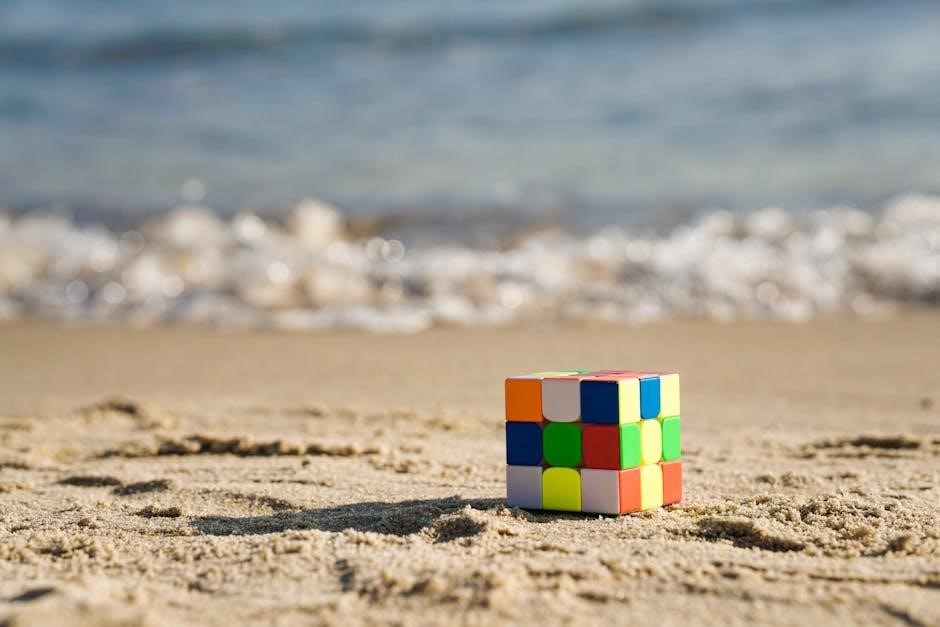
Understanding the Workspace Setup
Setting up an optimal workspace is crucial for a smooth 3D puzzle assembly. Start with a clean, flat, and stable surface, such as a large table or desk, to ensure pieces stay organized and within reach. Proper lighting is essential; natural light or a bright overhead lamp can help you see small details clearly. Keep frequently used tools, like screwdrivers or Allen wrenches, nearby to save time. A clutter-free environment minimizes distractions and prevents losing small parts. Consider using a puzzle mat or felt-covered surface to protect delicate pieces and prevent scratching. Finally, ensure your workspace is comfortable, with a supportive chair and good posture, to avoid fatigue during long assembly sessions. A well-prepared workspace fosters focus and enjoyment throughout the puzzle-building process.
Interpreting Instructional Diagrams
Instructional diagrams are vital for understanding how to assemble 3D puzzles. These visual guides provide a clear representation of each piece and its placement within the overall structure. Start by studying the diagrams to identify key components, such as connectors, hinges, or unique shapes. Pay attention to symbols or color coding, which often indicate specific assembly steps or required tools. Before beginning, compare the diagrams with the pieces you have to ensure nothing is missing. During assembly, refer to the diagrams frequently to confirm each step, especially for complex sections. If a diagram is unclear, rotate it or cross-reference it with other views to better understand the perspective. Practice interpreting diagrams to build confidence and avoid mistakes.
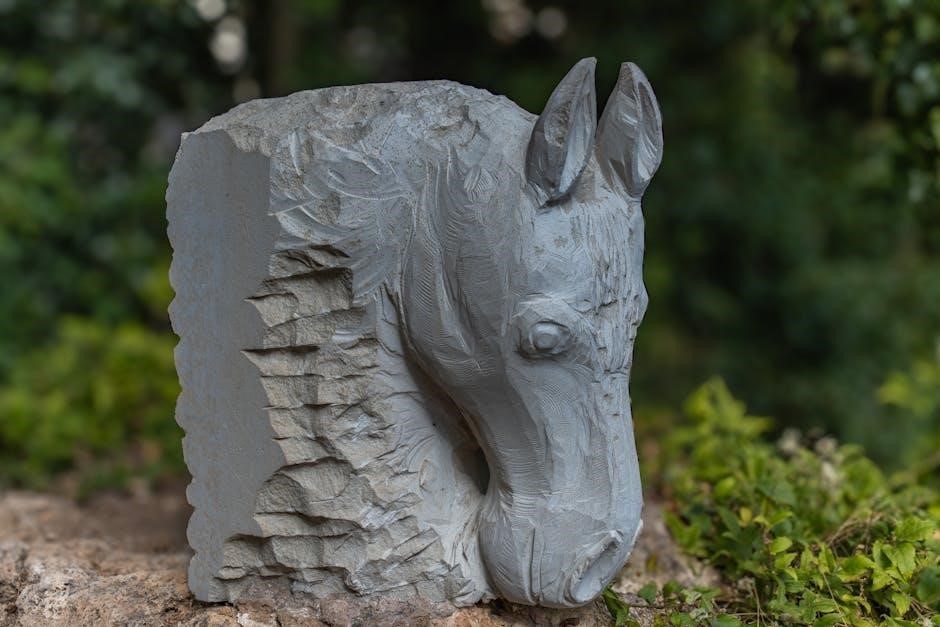
Assembly Process
Start with base pieces, following instructions to build upward. Use diagrams to align components, ensuring snug fits. Secure each piece with gentle force, avoiding breaks. For complex sections, test fits before finalizing. Complete with final adjustments and touches.
Step-by-Step Assembly Instructions
Begin by sorting puzzle pieces based on shape, color, and size to streamline assembly. Start with the base piece, typically marked or highlighted in instructions. Use diagrams to guide placement, aligning edges and tabs precisely. Secure each piece gently; avoid force to prevent damage. For complex sections, assemble smaller modules first, then integrate them into the main structure. Utilize tools like screwdrivers or Allen wrenches for specific connections. Work systematically, completing one area before moving to the next. Double-check alignment and fit before finalizing. Make adjustments as needed for stability and proper fit. Add finishing touches, such as decorative elements, last. Follow instructions carefully to ensure accuracy and enjoy the process of creating your 3D puzzle masterpiece.
Troubleshooting Common Assembly Issues
Common issues during 3D puzzle assembly include misaligned pieces, stuck parts, or instability. If a piece doesn’t fit, check for correct orientation and ensure tabs align with slots. Gently wiggle stuck pieces to avoid breaking them. For instability, revisit earlier steps to ensure a solid foundation. If a piece is missing, double-check the box or contact the manufacturer. Consult instructional diagrams or online resources for clarification. Use tools like screwdrivers or clamps sparingly to prevent damage. Patience is key; rushing can lead to errors. If frustration arises, take breaks and approach the problem fresh. Troubleshooting requires careful analysis and a methodical approach to resolve issues effectively.
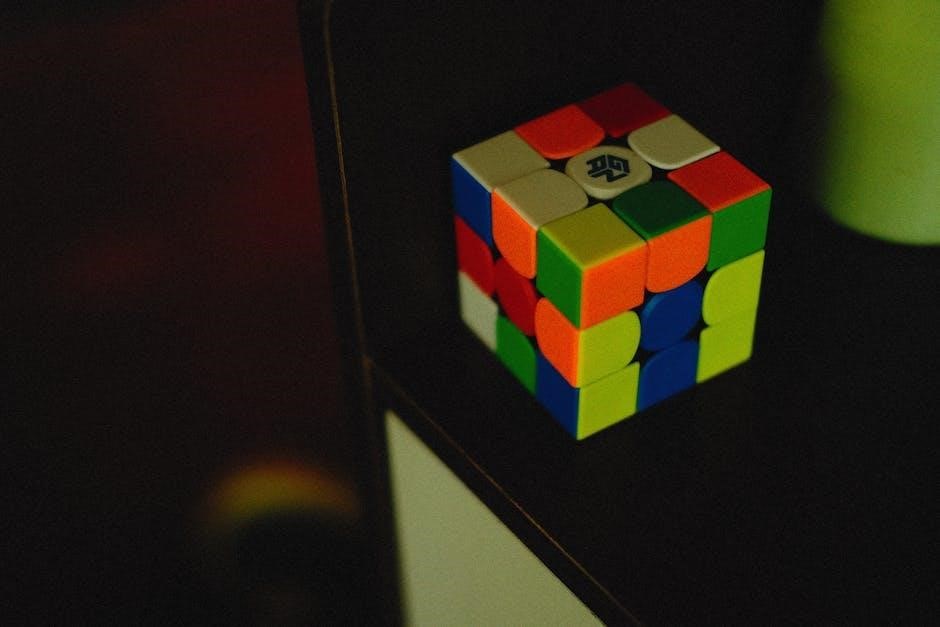
Utilizing Video Tutorials
Video tutorials offer a visual and interactive approach to 3D puzzle assembly, making complex steps easier to understand and execute, especially on platforms like YouTube, allowing for easy pausing and replaying.
Benefits of Video Guides for 3D Puzzles
Video guides provide a detailed, step-by-step visual breakdown of the assembly process, making it easier to understand complex sections. They allow puzzlers to pause, rewind, and replay instructions, ensuring no step is missed. Videos often highlight potential problem areas and demonstrate how to handle tricky pieces, reducing frustration. Additionally, they offer real-time assembly views, helping users visualize how parts fit together. Many video guides include tips for organizing pieces and troubleshooting common issues. This visual learning approach is particularly helpful for beginners or those tackling intricate designs for the first time, enhancing the overall puzzle-building experience.
Popular Platforms for 3D Puzzle Tutorials
YouTube is one of the most popular platforms for 3D puzzle tutorials, offering a wide variety of free video guides. Udemy and Skillshare provide structured courses with detailed instructions. Etsy and similar platforms often include tutorial links with puzzle kits. Pinterest is great for visual step-by-step guides and inspiration. Amazon and eBay sometimes feature video tutorials as part of product descriptions. Additionally, dedicated communities on Facebook and Reddit share user-generated tutorials and tips. These platforms cater to different learning styles, ensuring puzzlers can find a method that suits their needs. Whether you prefer video, written, or community-driven content, there’s a platform available to enhance your puzzle-building experience.

Advanced Techniques
Explore intricate designs, custom painting, and precision alignment for unique puzzle outcomes. Master complex geometries and symmetry for stunning results.
Painting and Customizing 3D Puzzles
Painting and customizing your 3D puzzle adds a personal touch and enhances its visual appeal. Start by selecting high-quality acrylic paints or specialized puzzle paints. Use a primer for better paint adhesion and to ensure vibrant colors. Apply thin, even coats to avoid peeling or cracking. Allow each layer to dry completely before adding additional details. For intricate designs, use fine-tip brushes or stencil techniques. Consider sealing your work with a clear coat to protect the paint and give it a glossy finish. Experiment with creative patterns or themes to match your puzzle’s design. Remember to work in a well-ventilated area and use non-toxic paints for safety. Customizing transforms your puzzle into a unique, personalized art piece.
Complex Designs: Tips for Completion
Completing complex 3D puzzle designs requires patience and strategic planning. Break down the puzzle into smaller, manageable sections, focusing on one area at a time. Use reference images or diagrams to guide your assembly, especially for intricate details. Start with the most challenging parts first to ensure proper alignment and stability; Handle delicate or small pieces with care to avoid damage. Keep all components organized using sorting trays or containers. Regularly double-check your work against the instructions to catch errors early. Take breaks to maintain focus and avoid frustration. With persistence and attention to detail, even the most complex designs can be mastered and enjoyed.
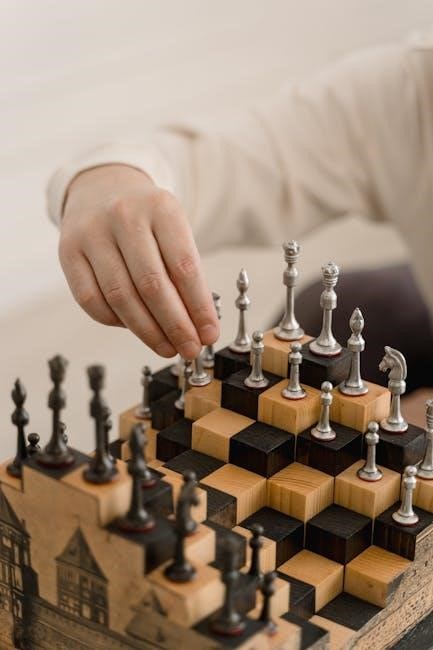
Maintenance and Display
Keep your completed 3D puzzle clean by gently brushing off dust. Display it on a stable, flat surface or in a glass case to protect it from damage. Avoid exposure to direct sunlight or moisture to preserve its condition. Regularly inspect for loose pieces and tighten as needed. Showcase your masterpiece proudly, ensuring it remains a lasting testament to your skill and patience.
Caring for Your Completed 3D Puzzle
To properly care for your completed 3D puzzle, start by gently cleaning it with a soft-bristled brush or a lint-free cloth to remove dust. Avoid using liquids or chemicals, as they can damage the materials. Store the puzzle in a cool, dry place, away from direct sunlight, to prevent fading or warping. Handle the puzzle with care to avoid chipping or breaking delicate pieces. If storing long-term, place it in a sturdy box or protective case. Regularly inspect the puzzle for loose pieces and tighten any connections as needed. For added protection, apply a clear, non-toxic sealant designed for puzzles. This will help preserve your masterpiece and ensure it remains stable over time.
Display Ideas for Finished Puzzles
Once your 3D puzzle is complete, showcase it proudly with creative display ideas. Place it on a sturdy shelf, glass cabinet, or desk to highlight its intricate design. For larger puzzles, consider a dedicated display table or pedestal to draw attention. If you have multiple puzzles, arrange them together to create a themed collection. Use LED lighting or spotlights to enhance visibility and add a decorative touch. For a modern look, mount the puzzle on a wall using a sturdy bracket or frame. You can also incorporate it into a diorama or scene to tell a story. Protect your puzzle from dust by placing it under a glass dome or acrylic case. These ideas will help you enjoy your finished masterpiece for years to come.

Additional Tips and Tricks
Stay organized, work in a quiet space, and use the right tools. Break tasks into smaller steps, track progress, and enjoy the creative process for a rewarding experience.
Time Management for Puzzle Completion
Effective time management is crucial for completing 3D puzzles efficiently. Start by setting realistic goals, such as dedicating a specific number of hours each week to the project. Prioritize assembling complex sections early when your focus is sharpest. Break the puzzle into smaller, manageable tasks to avoid feeling overwhelmed. Minimize distractions by designating a quiet workspace. Use a timer to allocate fixed intervals for work and breaks, ensuring consistent progress without burnout. Avoid rushing, as this can lead to errors. Take regular breaks to refresh your mind and maintain motivation. By balancing dedication and patience, you can enjoy the process and achieve a satisfying result.
Staying Organized During Assembly
Staying organized is key to efficiently assembling 3D puzzles. Begin by sorting pieces based on shape, color, or function, using trays or mats to keep them separated. Refer to the instruction manual or diagrams to identify which parts belong together. Maintain a clean workspace by regularly removing unused pieces and debris. Labeling components or using small containers can help track small or similar-looking parts. Avoid mixing pieces from different sections to prevent confusion. Use a checklist or progress tracker to monitor your advancement. Keeping tools and materials within easy reach ensures smooth workflow. By staying organized, you can focus on the assembly process without wasting time searching for misplaced pieces. This methodical approach enhances both efficiency and enjoyment.
Enjoying the Puzzle Assembly Process
Enjoying the assembly process of 3D puzzles involves embracing the journey as much as the final result. Start by setting a relaxed mindset, allowing yourself to unwind and focus on the creative aspect. Break the task into smaller, manageable steps to avoid overwhelm. Celebrate small victories, like completing a section, to stay motivated. Experiment with different techniques or strategies to enhance your problem-solving skills. Consider working in a comfortable, well-lit environment with background music or a podcast to make the experience more enjoyable. Sharing the process with friends or family can also turn it into a fun, collaborative activity. Remember, patience and persistence are key to finding joy in the assembly process. Embrace the challenge and take pride in your progress, as this mindset will make the journey rewarding and fulfilling.